| Title | Anatomical registration of intracranial electrodes. Robust model-based localization and deformable smooth brain-shift compensation methods. |
| Publication Type | Journal Article |
| Year of Publication | 2024 |
| Authors | Blenkmann, AOmar, Leske, SLiliana, Llorens, A, Lin, JJ, Chang, EF, Brunner, P, Schalk, G, Ivanovic, J, Larsson, PGunnar, Knight, RThomas, Endestad, T, Solbakk, A-K |
| Journal | J Neurosci Methods |
| Volume | 404 |
| Pagination | 110056 |
| Date Published | 2024 Apr |
| ISSN | 1872-678X |
| Keywords | Brain, Cerebral Cortex, Electrodes, Electrodes, Implanted, Electroencephalography, Humans, Magnetic Resonance Imaging |
| Abstract | BACKGROUND: Intracranial electrodes are typically localized from post-implantation CT artifacts. Automatic algorithms localizing low signal-to-noise ratio artifacts and high-density electrode arrays are missing. Additionally, implantation of grids/strips introduces brain deformations, resulting in registration errors when fusing post-implantation CT and pre-implantation MR images. Brain-shift compensation methods project electrode coordinates to cortex, but either fail to produce smooth solutions or do not account for brain deformations. NEW METHODS: We first introduce GridFit, a model-based fitting approach that simultaneously localizes all electrodes' CT artifacts in grids, strips, or depth arrays. Second, we present CEPA, a brain-shift compensation algorithm combining orthogonal-based projections, spring-mesh models, and spatial regularization constraints. RESULTS: We tested GridFit on ∼6000 simulated scenarios. The localization of CT artifacts showed robust performance under difficult scenarios, such as noise, overlaps, and high-density implants (<1 mm errors). Validation with data from 20 challenging patients showed 99% accurate localization of the electrodes (3160/3192). We tested CEPA brain-shift compensation with data from 15 patients. Projections accounted for simple mechanical deformation principles with < 0.4 mm errors. The inter-electrode distances smoothly changed across neighbor electrodes, while changes in inter-electrode distances linearly increased with projection distance. COMPARISON WITH EXISTING METHODS: GridFit succeeded in difficult scenarios that challenged available methods and outperformed visual localization by preserving the inter-electrode distance. CEPA registration errors were smaller than those obtained for well-established alternatives. Additionally, modeling resting-state high-frequency activity in five patients further supported CEPA. CONCLUSION: GridFit and CEPA are versatile tools for registering intracranial electrode coordinates, providing highly accurate results even in the most challenging implantation scenarios. The methods are implemented in the iElectrodes open-source toolbox. |
| DOI | 10.1016/j.jneumeth.2024.110056 |
| Alternate Journal | J Neurosci Methods |
| PubMed ID | 38224783 |
| Grant List | U01 NS108916 / NS / NINDS NIH HHS / United States U19 NS107609 / NS / NINDS NIH HHS / United States R01 EB026439 / EB / NIBIB NIH HHS / United States P41 EB018783 / EB / NIBIB NIH HHS / United States R37 NS021135 / NS / NINDS NIH HHS / United States U24 NS109103 / NS / NINDS NIH HHS / United States P50 MH109429 / MH / NIMH NIH HHS / United States |

